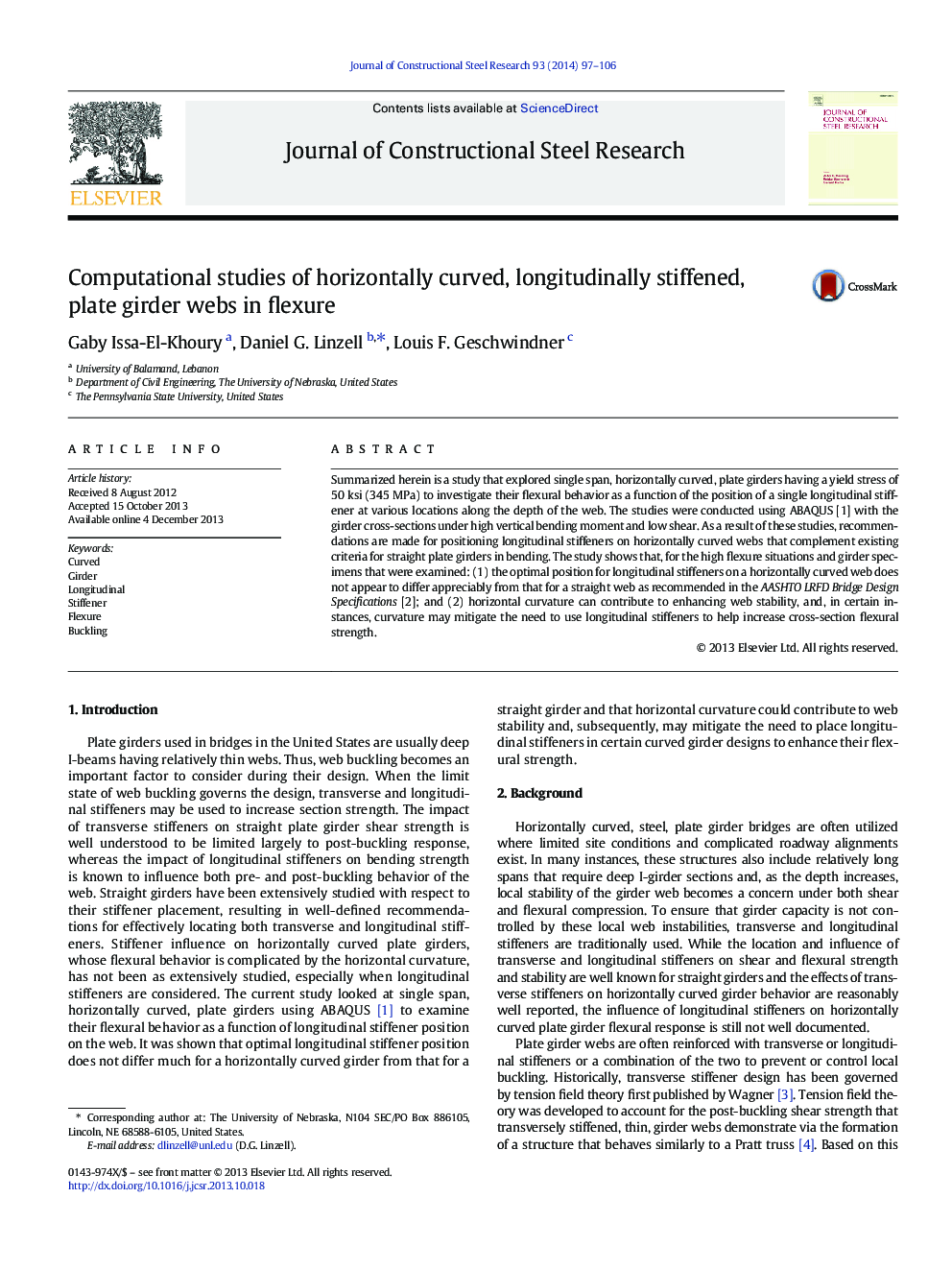| Article ID | Journal | Published Year | Pages | File Type |
|---|---|---|---|---|
| 284743 | Journal of Constructional Steel Research | 2014 | 10 Pages |
•We modeled horizontally curved, steel, plate girders in flexure.•We studied flexural behavior as a function of web longitudinal stiffener position.•We recommend stiffener position on curved webs that complement existing criteria.•We found that optimal position is similar to that for a straight web from AASHTO.•We found that horizontal curvature helps web stability and may limit stiffener need.
Summarized herein is a study that explored single span, horizontally curved, plate girders having a yield stress of 50 ksi (345 MPa) to investigate their flexural behavior as a function of the position of a single longitudinal stiffener at various locations along the depth of the web. The studies were conducted using ABAQUS [1] with the girder cross-sections under high vertical bending moment and low shear. As a result of these studies, recommendations are made for positioning longitudinal stiffeners on horizontally curved webs that complement existing criteria for straight plate girders in bending. The study shows that, for the high flexure situations and girder specimens that were examined: (1) the optimal position for longitudinal stiffeners on a horizontally curved web does not appear to differ appreciably from that for a straight web as recommended in the AASHTO LRFD Bridge Design Specifications [2]; and (2) horizontal curvature can contribute to enhancing web stability, and, in certain instances, curvature may mitigate the need to use longitudinal stiffeners to help increase cross-section flexural strength.
